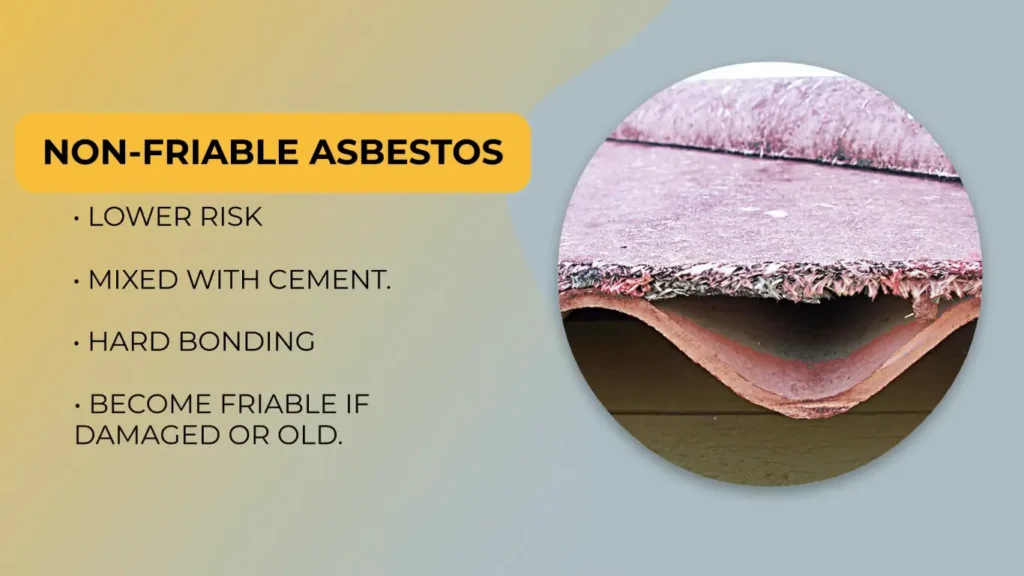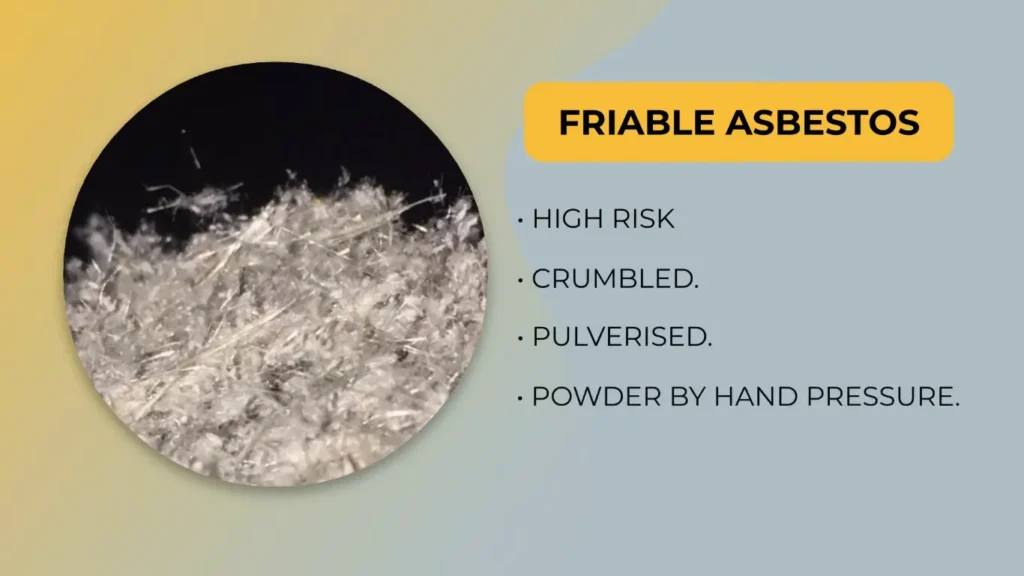Asbestos, once hailed as a miracle material for its fire-resistant properties and versatility, has become a notorious element in the realm of home construction and renovation. Although its use has drastically declined due to health concerns, many homes built before the 1980s may still contain asbestos. Understanding the different types of asbestos, their locations in homes, and what actions to take if you encounter them is crucial for maintaining a safe living environment.
This article will delve into the various types of asbestos found in homes, outline their characteristics, and provide guidance on managing potential exposure effectively.
What is Asbestos?
Asbestos refers to a group of naturally occurring fibrous minerals known for their heat resistance, tensile strength, and insulating properties. It has been used extensively in construction materials, automotive parts, and various industrial applications. Six primary types of asbestos are classified into two categories: serpentine and amphibole.
Why Is Asbestos in the Home Dangerous?
Asbestos in the home is dangerous primarily due to the health risks associated with exposure to its microscopic fibers. These fibers can become airborne and inhaled when disturbed, leading to serious respiratory conditions.
Prolonged asbestos exposure can cause diseases such as asbestosis, a chronic lung condition, and various forms of cancer, including lung cancer and mesothelioma, a rare cancer that affects the lining of the lungs and abdomen. Additionally, the symptoms of asbestos-related diseases often take years or even decades to manifest, making early detection challenging.

The danger is compounded by the fact that many homeowners are unaware of the presence of asbestos in their properties, especially in older homes built before the 1980s. Therefore, understanding and addressing the risks of asbestos is crucial for safeguarding the health of all occupants.
Where to Find Asbestos in Old Homes?
Asbestos was a common building material in homes built before the 1980s due to its durability, fire resistance, and insulation properties. Asbestos may be found in several key areas if you’re inspecting an old house. One of the most common locations is insulation, especially around pipes, boilers, and furnaces.
Asbestos could also be present in floor tiles, ceiling tiles, and even roofing materials. Additionally, many older homes used asbestos-containing cement siding or plaster for fireproofing. If the house has textured paints or joint compounds, those could also contain asbestos fibers.
It’s important to avoid disturbing these materials, as asbestos becomes dangerous when airborne, posing serious health risks. Professional testing and removal should be considered if asbestos is suspected.
Types of Asbestos
Here’s the information in a table format:
| Type | Category | Characteristics | Common Uses |
|---|---|---|---|
| Chrysotile | Serpentine | Curly fibers, more flexible; least toxic | Roofing, flooring, insulation |
| Amosite | Amphibole | Straight, needle-like fibers; more toxic | Pipe insulation, cement sheets |
| Crocidolite | Amphibole | It can be found as a contaminant in other asbestos types | Shipbuilding, insulation |
| Tremolite | Amphibole | Can be found as a contaminant in other asbestos types | Found in talc products |
| Anthophyllite | Amphibole | Rare in construction; can be mixed with other asbestos | Insulation materials |
| Actinolite | Amphibole | Rare, less commonly found | Occasional contaminants in construction |
When Was Asbestos Used in Homes?
Asbestos was widely used in homes from the late 19th century until the late 20th century, primarily due to its exceptional fire-resistant and insulating properties. Its popularity surged in the 1920s and 1930s, coinciding with a significant rise in the construction of homes and commercial buildings.
Asbestos found its way into various materials, including insulation, roofing shingles, floor tiles, and textured paint, making it a common component in many residential construction projects. Asbestos use peaked between the 1940s and 1970s, particularly during the post-World War II building boom when the demand for affordable housing soared.
However, as awareness of the severe health risks associated with asbestos exposure grew, regulations began to tighten, leading to a decline in its use by the late 1970s. By the 1980s, many countries had significantly restricted or banned asbestos in construction materials, yet homes built before these regulations may still contain this hazardous material.
Common Locations of Asbestos in Homes:
Asbestos may be present in various materials within homes, particularly in structures built before the 1980s. Here are some common locations to inspect:
- Insulation: Asbestos was widely used as insulation material, particularly around pipes, boilers, and attics.
- Flooring: Vinyl floor tiles and the adhesive used to secure them often contain asbestos.
- Ceiling Tiles: Asbestos may be in textured ceiling tiles or acoustic ceiling sprays.
- Roofing Materials: Certain roofing shingles and coatings may contain asbestos.
- Wall Materials: Some wallboard, plaster, and cement products include asbestos fibers.
- Automotive Products: Brake linings, gaskets, and other automotive parts can also be sources of asbestos exposure.
How to Identify Asbestos in the Home?
Identifying asbestos in the home can be challenging, as it often blends seamlessly into common building materials. Since asbestos was widely used in insulation, floor tiles, roofing shingles, and textured paints before being regulated, more than visual identification is needed.
Materials such as pipe insulation, ceiling tiles, and older vinyl flooring may contain asbestos, but the only definitive way to identify it is through professional testing. Accredited asbestos inspectors can take samples and analyze them in a laboratory, ensuring accurate detection.
If you suspect asbestos in your home, it’s crucial not to disturb the materials, as asbestos fibers are hazardous when airborne. Always consult professionals for proper testing and safe removal.
Visual Clues to Help Identify Asbestos in Houses:
While it’s difficult to confirm asbestos in a home just by looking, some visual clues may indicate its presence. Older homes, especially those built before the 1980s, often feature materials that might contain asbestos. Some clues include old, brittle insulation around pipes and furnaces, which may appear grayish or dusty.
Floor tiles, particularly 9×9-inch tiles, and the adhesive used to lay them down are common asbestos-containing materials. Ceiling tiles with a fibrous or rough texture and crumbling drywall or plaster could also contain asbestos.
Roofing shingles or siding that look unusually worn or brittle might be another clue. However, visual inspection needs to be more conclusive, and professional testing is necessary to confirm the presence of asbestos.
Minimising Asbestos Exposure Risks in the Home:
Taking steps to minimize asbestos exposure risks in the home is essential for protecting homeowners and their families. Homeowners must refrain from attempting to remove asbestos on their own.
Without the proper training and safety measures, DIY removal can increase the risk of exposure and lead to serious health issues. Instead, hiring a certified professional is vital, as they have the expertise to safely handle and dispose of asbestos-containing materials.
Additionally, many cities and states enforce regulations regarding the proper disposal of asbestos and related materials. Understanding these regulations is important to protect everyone in the home, including workers and neighbors, from potential exposure.
How to Identify Asbestos in the Home? Potential Examples:

Identifying asbestos in the home often requires looking at materials commonly used in construction before the 1980s. Some potential examples of asbestos-containing materials include popcorn ceilings, which were popular for their textured look.
Old vinyl floor tiles, especially those that measure 9×9 inches, are also likely to contain asbestos, as are their adhesives. Asbestos was frequently used in pipe and boiler insulation, which might appear white or grayish, paper-like wrapping around these systems.
Roofing materials, such as shingles and siding made of cement sheets, are other potential sources. Additionally, joint compounds used to seal drywall or patch walls often contained asbestos. If you suspect any of these materials in your home, avoid disturbing them and seek professional testing to confirm whether they contain asbestos.
What to Do If You Find Asbestos in Your Home?
1: Do Not Disturb the Material:
If you suspect the presence of asbestos, the first step is to avoid disturbing it. Asbestos is hazardous only when its fibers become airborne. Do not touch, move, or attempt to remove the material yourself.
2: Assessment and Inspection:
- Hire a Professional: Engage a certified asbestos inspector to assess the situation. They will take samples and send them to a laboratory for analysis.
- Understand the Risks: Discuss the potential risks and options with the inspector.
3: Decide on a Course of Action:
There are generally three options when it comes to dealing with asbestos:
- Leave it Alone: If the asbestos-containing material (ACM) is in good condition and not likely to be disturbed, it can be left undisturbed.
- Encapsulate: This involves sealing the material with a protective coating to prevent fiber release.
- Remove: Professional removal is recommended if the material is damaged or poses a risk.
4: Hire a Licensed Asbestos Abatement Contractor:
If removal is necessary, ensure the contractor is licensed and follows local, state, and federal regulations. They should have the proper equipment and training to handle asbestos safely.
5: Post-Removal Inspection:
After removal, a follow-up inspection and air quality testing should be conducted to ensure that no asbestos fibers remain in the air or the materials.
Legal and Regulatory Considerations:
Asbestos management is subject to various regulations at the federal, state, and local levels. Familiarize yourself with the following:
- EPA Regulations: The Environmental Protection Agency (EPA) regulates asbestos through the Asbestos Hazard Emergency Response Act (AHERA), which sets standards for managing asbestos in schools and public buildings.
- OSHA Regulations: The Occupational Safety and Health Administration (OSHA) establishes guidelines to protect workers from asbestos exposure during renovations and removals.
- State Laws: Many states have regulations regarding asbestos removal and abatement, so it’s essential to check local laws.
Costs of Asbestos Removal:
The costs associated with asbestos removal can vary widely depending on several factors, including:
- Type of Material: Some materials are more challenging to remove than others.
- Extent of Contamination: Larger areas with ACM will typically cost more to remediate.
- Location: Costs may vary based on regional labor rates and regulations.
Here’s the information presented in a table format:
| Type of Removal | Average Cost Estimate |
|---|---|
| Inspection | $300 – $800 |
| Encapsulation | $1,500 – $3,000 |
| Removal (per square foot) | $10 – $30 |
Preventative Measures and Best Practices
- Regular Inspections: Regularly inspect older homes, especially before renovations or major repairs.
- Proper Maintenance: Keep materials in good condition. If you notice any signs of damage or wear, consult a professional.
- Education and Awareness: Educate yourself and your family about the risks associated with asbestos and how to recognize potential ACMs.
- Safe Renovation Practices: Always hire licensed professionals for renovations in older homes and ensure they are trained in asbestos awareness.
Conclusion:
Understanding the different types of asbestos found in homes is crucial for homeowners, especially those in older properties. While asbestos can pose serious health risks, appropriate measures can ensure safety. Regular inspections, professional assessments, and adherence to legal regulations can mitigate the risks associated with asbestos exposure. If you suspect the presence of asbestos in your home, it’s essential to take immediate action by consulting professionals to ensure a safe living environment.
FAQs:
What are the most common types of asbestos found in homes?
The most common types of asbestos in homes are chrysotile (white asbestos) and amosite (brown asbestos). Chrysotile is often used in insulation and flooring, while amosite is found in pipe insulation and cement sheets.
How can I tell if my home contains asbestos?
The only definitive way to determine if your home contains asbestos is through testing by a certified asbestos inspector. They will take samples of suspected materials and analyze them in a laboratory.
Is it safe to live in a house with asbestos?
Living in a house with asbestos is generally safe as long as the asbestos-containing materials are in good condition and not disturbed. If the materials are damaged or you plan renovations, consult a professional.
How much does asbestos removal cost?
Asbestos removal costs can vary widely based on the type of material, extent of contamination, and location. Generally, inspection costs range from $300 to $800, while removal can be $10 to $30 per square foot.
What should I do if I find asbestos in my home?
If you find asbestos, do not disturb it. Contact a licensed asbestos inspector for assessment and follow their recommendations for encapsulation or removal by a certified abatement contractor.
Request a Free Quote
Contact Us for More Info
Email: info@aiohomeservices.com
Phone Number: +1 714-600-1480
Address: 2011 Hout Rd, Mansfield, OH 44905, United States

Dr. William Pitman is a leading researcher and one of the foremost experts in asbestos testing and removal. With decades of experience in environmental science and public health, Dr. Pitman has dedicated his career to ensuring safe and effective asbestos abatement practices. His groundbreaking research has set industry standards for asbestos testing methodologies, helping to protect countless individuals from hazardous exposure. A sought-after consultant and speaker, Dr. Pitman combines scientific precision with practical expertise, making him a trusted authority in his field.
